10 Fantastic Bonsais That Can Grow In A Planter Without Holes
If you’ve done your research or have experience with bonsais, you’ll know that many species don’t like their roots wet all the time. Sometimes, you’ll come across a stunning container that will be perfect for your beautiful tree. When you inspect it, you discover it’s a planter without holes.
That doesn’t mean you need to put it back with utter disappointment. There are still options for you to make use of it, even if it means a slight adjustment. We’ll show you which bonsais do best with these planters and how to make holes if you want to.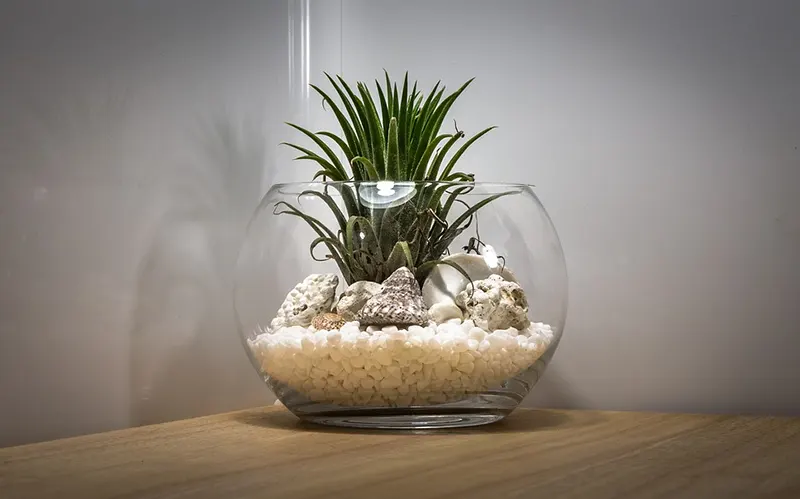
Why Do They Make A Planter Without Holes?
Delving into why pot creators make planters without holes doesn’t yield many results. Our best guess is that they can only achieve the design they want with a ceramic container, which can be glazed or unglazed. When you drill a hole, especially with glazed products, there’s a very good chance that it can crack.
We’ve seen many bonsai ceramic pots with massive holes in them, though. So, there are at least some container makers that go the extra mile to ensure that there’s sufficient drainage. For the most part, the planter without holes is made for house plants and not bonsais. However, we do completely understand the desire to buy one that looks absolutely outstanding.
Can you Put a Bonsai in a Planter With No Holes?
We generally don’t recommend placing a bonsai in a pot without holes. They need enough drainage to ensure that the roots don’t become rotten in the soil. There are very few species that can survive in these conditions. We do have some suggestions later on, though.
Another problem is with pests and other fungi. They thrive in those damp conditions, which means it will attract them. They’ll end up using your bonsai as a food source, which is something you don’t want.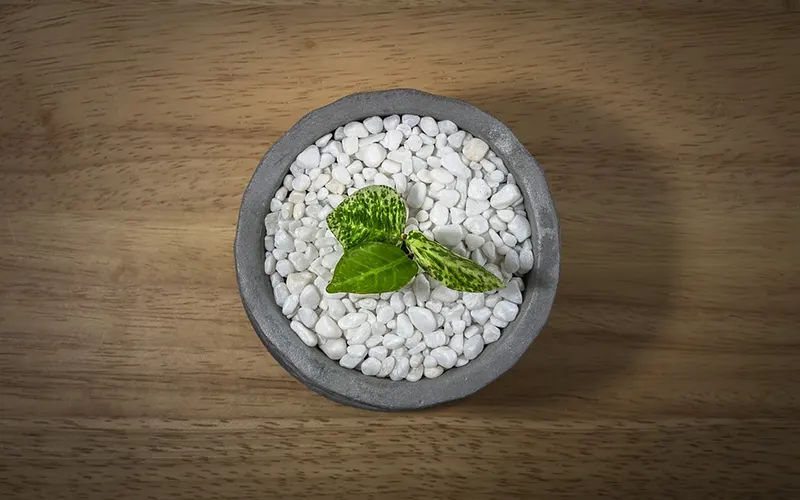
Top 10 Bonsais for Planters Without Holes
Despite our warnings against doing so, there are different types of bonsai trees you can grow in pots without holes. Here are our top selections, but don’t forget to read further on to see how you can improve drainage for the tree’s health.
Oleander
The Oleander usually grows as a bush in nature. It can tolerate drought conditions quite well, which is why you can easily get away with lightly watering it once a week if necessary. It’s ideal for placing in a planter without holes where you have plenty of drainage rocks at the bottom.
The main concern is that the leaves have some toxic properties, so you’ll need to be careful when handling the foliage. Each flower has a stunning corona, most of the time with stripes that call attention to pollinators. There are various species with different petal colors.
Schefflera
This genus of plants is popular in households, mostly Schefflera actinophylla. It’s also known as the umbrella bonsai tree due to the delightful canopy in the foliage. What makes it outstanding for containers without holes is that it can live in dry and moist conditions and isn’t fussy with how wet the soil is. Still, you should keep a lookout for fungal formations.
Jade tree
Portulacaria afra is wildly common in many countries as a household plant, specifically in dry regions. If you’re looking for a bonsai that can withstand days without water, it’s the Jade tree. The small oval leaves look stunning, especially when you develop it as a cascade bonsai. You’ll have to wait until the roots soak all the water before you give it more, as the branches are succulent in nature and may break.
Weeping Willow
One of our favorite bonsais is the Weeping Willow. It has gorgeous foliage that hangs down from the canopy, presenting a wonderful display when the flowers appear. You’ll usually find the tree doing well next to a river or within a swamp.
For that reason, it’s able to do well in a planter without holes. Even if water collects at the bottom, it gives the Willow a place to rest its roots and soak the liquid when it’s thirsty. The roots tend to grow to the closest water source, so the deeper the better. You can even use a shallow pot with no holes and try to make a small stream along one side for visual effect.
American Larch
The American Larch is a deciduous conifer that does well in cold, wet climates. You’ll find many of them in Canada and Alaska. It has beautiful needles and cones, and the environments it thrives in are swamps, bogs, fens, and other places with plenty of water around.
Pomegranate
The pomegranate fruit tree loves drinking plenty of water all year round, especially in spring and summer. While you’ll still need to take precautions, it won’t be opposed to daily watering in moderate amounts.
You’ll be surprised how quickly the soil becomes dry again, especially if you’re growing a bonsai forest. Take note of the leaves to see if the roots are doing well, as they’ll give signs of overwatering.
Chinese Waterberry / Syzygium
Syzygium stores water in the berries, hence the common name of Chinese Waterberry. As part of the myrtle family, it adores having plenty of water available to drink as it pleases, so you don’t have to worry about giving it too much. If you notice that the leaves aren’t growing as quickly as they should or there’s a lack of flowers and berries, it may be time to replace the soil.
Also, make sure you slow down in winter when it goes dormant. The roots might enjoy the water, but mold will form when the tree goes to sleep and no longer absorbs any liquid or nutrients.
Lemon tree
The Citrus limon bonsai has bright, yellow-green leaves, especially when you grow it from a 2 week old seedling. It’s easy to train it to grow for several years, as long as you give it several hours of sun during the day. The happiest moment is when you see the small lemon fruit for the first time.
One of the aspects you’ll notice is how thirsty the tree is. If you’re using a tray, you’ll be able to see how quickly the liquid vanishes in the first few hours of the day. While it loves having plenty of water, make sure you only give it as much as it can handle daily so there’s not too much moisture left over.
Ficus
If you want to create a terrarium, we highly recommend using a ficus bonsai. These trees can handle any form of punishment and thrive under most conditions. We have a small Australian fig growing inside a glass bonsai terrarium, formed from a cutting we took from our tree in the backyard. The condensation does all the watering for us, and we only open the lid once a week to give it some air.
Red Flowering Gum
Another species we love is Corymbia ficifolia, otherwise known as the Red Flowering Gum. It’s also part of the myrtle family, and as you can see, they tend to love watery soil. The flower is absolutely beautiful, especially when displayed on a bonsai. You’ll want to make this your centerpiece in your home when summer arrives. It shouldn’t have a problem with wet roots, but just check to ensure no mold forms.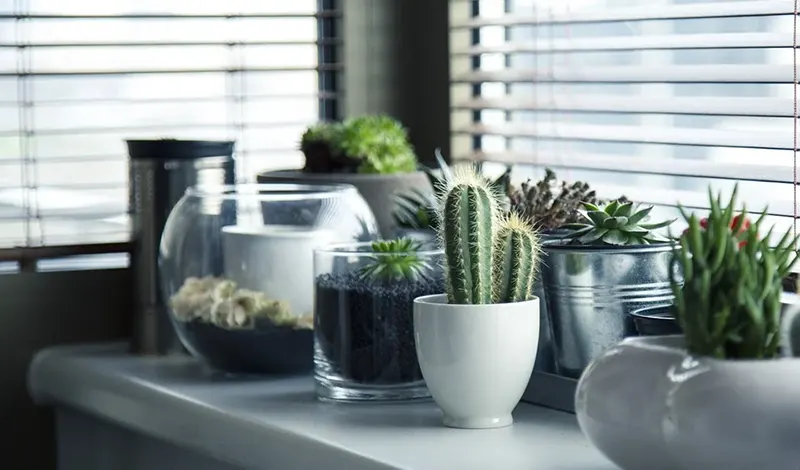
How to Improve Drainage with No Holes
Now that you know which bonsai plants you can put in planters with no holes, it’s time to see how you can improve drainage. You have a few options to choose from, and you’ll need to select one that’s best for your situation.
- Drainage levels: One solution is to create different filter levels in your planter. You can start with drainage stones at the bottom, followed by a soil mix, and then topped with river sand to absorb as much of the water as possible.
- Cachepot: If you really want to ensure proper drainage, you can place a smaller pot with holes inside the planter without holes. You can cover the smaller container with soil and pebbles so that it’s not visible, and people will think it’s only one pot.
- Bark and pebbles: You can substitute soil for bark and pebbles. They’re easier to monitor for overwatering and release some of the water. It also ensures that the roots don’t rest in muddy, wet soil all week long.
- Coffee filter: Finally, you can place a coffee filter between the soil and the drainage pebbles at the bottom. This extra layer stops the roots from moving into the pebbles, keeping them dry in the soil.
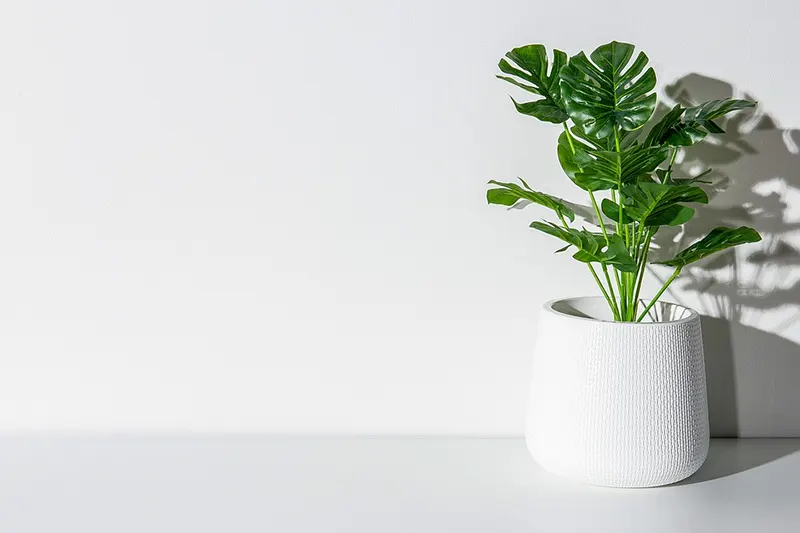
Bonsai Care Rules for When There Are No Holes in the Planter
Of course, you can’t perform the same bonsai tree care in a container with no holes. It causes more maintenance, and you’ll have to pay more attention to your beloved tree. Here are some rules for looking after it when you really wanted that beautiful planter.
Keep Watering to a Minimum
The first rule should be obvious, even to beginners in the art of bonsai. Since there’s no drainage, you’ll need to keep watering to a minimum. The usual trick applies: press your finger in the substrate and ensure there are at least 3 inches of dryness in the top level. If it’s still wet, that means the bonsai tree isn’t done drinking yet.
Manage the Drainage Layer
You can create two drainage layers in the soil if you’d like. Feel free to use standard drainage rocks for the bottom while aiming for pumice or perlite as a middle layer between the soil. It depends on how much drainage you’re aiming for and how deep the planter is.
In this situation, testing the soil with your finger may not apply. The sun will evaporate the moisture from the top layer, but there could still be water lower down. You can use a chopstick to press all the way down to the bottom. If there isn’t much moisture on it when you pull it back up, you can proceed to water your bonsai.
Try Activated Charcoal
Another trick you can use is placing activated charcoal as a bottom layer in the planter without holes. It absorbs water thanks to its natural properties, caused by being heated at high temperatures. The pieces will soak any additional moisture that makes its way to the lowers levels.
An added benefit is the action against fungus. If the soil remains damp for too long, mold and other fungi love to develop so that they have something to feed on. Activated charcoal acts as a deterrent against them and any small pests that find their way into the substrate.
Tip the Container Over
One way you can remove excess water is to gently tip the planter over. Make sure you keep a firm hand on the soil or pebbles so that they don’t fall out. If the bonsai has secured its roots in the substrate already, it shouldn’t be an issue.
Watch how much liquid leaves the pot. It will give you some idea of whether or not you’ve been overwatering. Don’t water it after tipping the container, as the soil will still be moist, and you’ll need to wait about two days before watering again.
Stay Away from Rain
The deadliest enemy to a planter without holes is rain. You need complete control over how much water enters the soil, and rain can completely clog the substrate and kill the roots. We recommend you keep the container inside during the wet seasons.
If you’re determined to keep the bonsai outside, you’ll need to provide some shelter above it to keep the rain out. It’s essential that you monitor and manage the water level in the planter. Should any wind spray rain onto the tree, you’ll need to do some damage control and find a way to drain the liquid, such as tipping the pot over.
Size Matters
As a general rule, bonsai pots are shallow and wide to prevent the roots from growing too deep. The problem with gorgeous planters without holes is that they’re often deep and tall. That means there’s more soil to collect the water, resulting in root rot and other issues.
One of the best ways to deal with this situation is by introducing various layers as mentioned before. As a matter of fact, you can have a deeper drainage level at the bottom to compensate for the height. The only issue is that stagnant water can become bad and infested with mold, so look into adding activated charcoal among the pebbles.
Repot if Necessary
If all else fails and the bonsai tree or soil doesn’t look healthy, you may need to repot it into a planter with drainage holes. You don’t want to wait until it’s too late, as it’s incredibly sad to lose one of your trees due to neglect. Find a better container that will ensure the water has a way to leave.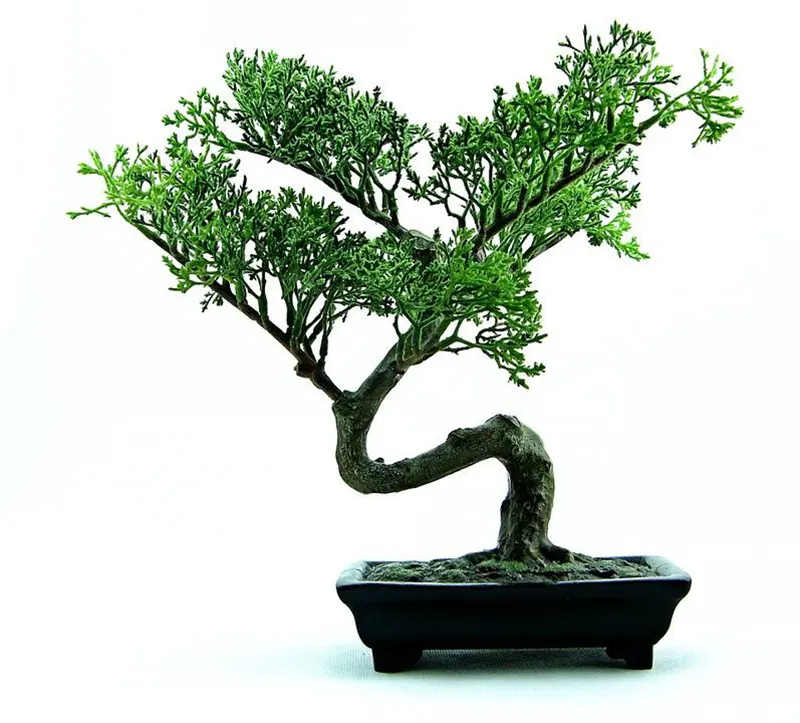
Situations that are Ideal for Planters Without Holes
There are actually quite a few situations where planters without holes are ideal. It’s mostly where you don’t want the water to cause damage, and a tray won’t suffice. Let’s take a quick look at a few scenarios:
- Terrarium: A bonsai terrarium is an enclosed container that holds a small ecosystem inside it. Most of them are made of glass, so you can see what’s happening inside. Therefore, you won’t find any drainage holes, and the whole system relies on condensation for water.
- Wooden floors: The last thing you want in your home with wooden floors is for the bonsai pot to drip all over it. It will cause damage to the planks, especially when exposed to liquids for too long. Also, placing a drip bucket underneath if it’s a hanging pot doesn’t look good.
- Near valuable items: Some people grow bonsais in their office or on their desk at home. They place their phones nearby, or there may be a PC or monitor in the area. While you can use a drip tray for most of these, people sometimes opt for planters without holes.
- Balcony: If you’re renting an apartment, you may have designed your patio or balcony with bonsais. The landlord won’t be happy when he pays a visit and sees water dripping all over the floor, messing up the tiles.
- Counters: You’ve just installed a new counter in the kitchen and then placed your bonsai with a tray on it. Your cat decides to see what you’re cooking and knocks the tray over, spilling water everywhere. You can see why this would be a bad idea.
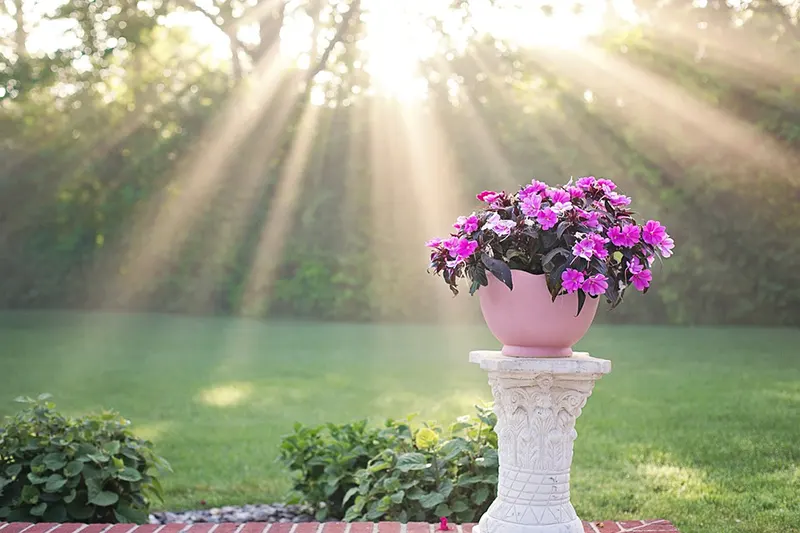
How to Drill Holes in a Planter
For the brave souls, you do have the option to drill holes in the planter. When it comes to clay or cement containers, there’s a high probability of it cracking or breaking, which is why you’ll need to be incredibly careful. It’s best to ask someone who has experience in this matter.
Step 1: Use an appropriate surface
Be sure to find a surface you can work on that’s soft but solid. You’re going to press the drill bit firmly against the planter, so you don’t want the counter to give way when you do. However, you don’t want the rims to chip against the surface when working on it. You can cover it with a blanket or some other material to safeguard against damage.
Step 2: Selecting the drill bit
There are different types and sizes in the drill bit industry. For example, the most common options are wood, stone, and brick or masonry. There are also specialized ones with a pilot point for ceramic objects, which is the type you’ll need for the planter. Of course, if the material is timber, it’s much easier to make a hole in the planter.
Step 3: Plan your holes
The drill bit’s size comes into play when deciding where to place the holes at the bottom of the planter. You want it wide enough to drain the water, but not too large that the soil falls out. Usually, the thickness of your pinkie finger is the way to go. The width of the pot will determine how many holes you should make.
Step 4: Drill carefully and safely
Please remember that you’ll need safety gear and eyewear when working with a drill. It’s better if you have a drill press to work with, but it’s not absolutely necessary. When you’re ready, gently begin drilling into the planter without holes. Pay attention to how the material behaves when you make the hole, as you’ll notice very quickly if you’re doing something wrong. If you see the pot cracking or breaking, stop immediately.
Step 5: Cover holes with mesh
If you’ve succeeded, you now have a lovely bonsai planter with holes. Before you place the soil, we recommend adding some mesh over the holes to prevent the soil from falling out. Also, it will stop roots from growing out of them after a few years. You can also secure the bonsai with wires around these holes attached to the trunk.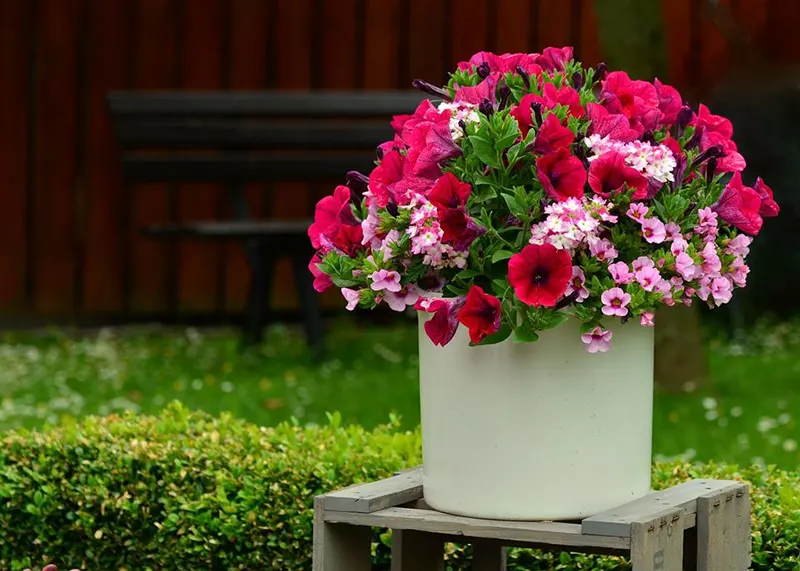
Final Thoughts
When you spot a beautiful planter without holes, it’s not the end of the world. You can still put your bonsai in it, as long as you take the precautions we mentioned in this lengthy guide. We hope it’s helped you with the pot you want. Let us know if you have any questions or need assistance with your container.







